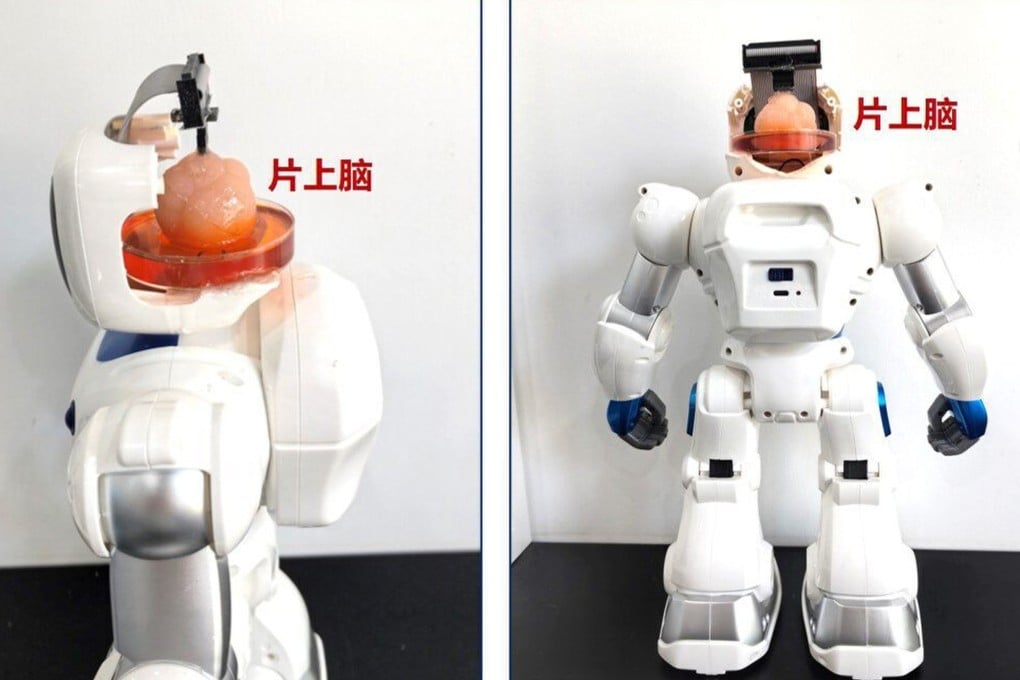Chinese scientists create robot with brain made from human stem cells
- Researchers have developed brain-on-chip technology to train the robot to perform tasks such as gripping objects

Chinese scientists have developed a robot with a lab-grown artificial brain that can be taught to perform various tasks.
The brain-on-chip technology developed by researchers at Tianjin University and the Southern University of Science and Technology combines a brain organoid – a tissue derived from human stem cells – with a neural interface chip to power the robot and teach it to avoid obstacles and grip objects.
The technology is an emerging branch of brain-computer interfaces (BCI), which aims to combine the brain’s electrical signals with external computing power and which China has made a priority.
It is “the world’s first open-source brain-on-chip intelligent complex information interaction system” and could lead to the development of brain-like computing, according to Tianjin University.
“[This] is a technology that uses an in-vitro cultured ‘brain’ – such as brain organoids – coupled with an electrode chip to form a brain-on-chip,” which encodes and decodes stimulation feedback, Ming Dong, vice-president of Tianjin University, told state-owned Science and Technology Daily on Tuesday.
BCI technology has gained widespread attention due to the Elon Musk-backed Neuralink, an implantable interface designed to let patients control devices with only their thoughts.